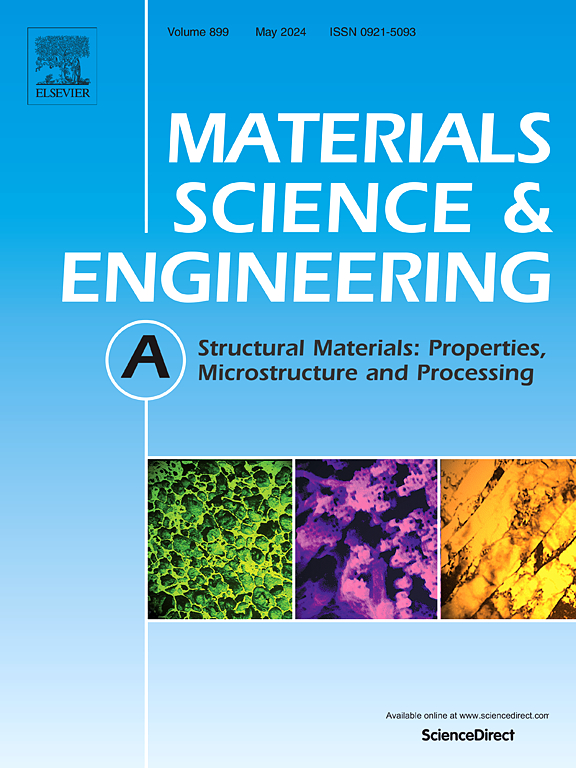Effect of cold work on martensitic phase transformation and mechanical properties of Ta nanofibers / NiTi shape memory alloy composite
IF 6.1
2区 材料科学
Q1 MATERIALS SCIENCE, MULTIDISCIPLINARY
引用次数: 0
Abstract
This work report a novel Ta nanofibers - reinforced NiTi shape memory composite exhibiting both high radiopacity and exceptional deformability. Herein, the composite was fabricated via compositional design, casting, forging, hot extrusion, warm drawing, and 88 % cold-drawing deformation followed by annealing. Microstructural analysis reveals that the diameter of Ta nanofibres decreases with increasing cold-drawing deformation. Upon tensile loading, the sample subjected to 80 % cold-drawing deformation followed by low-temperature annealing at 400 °C exhibits a high upper plateau stress of 670 MPa, attributed to the synergistic strengthening effect of the nanocrystalline NiTi matrix and the refined Ta nanofibres. The phase transformation behaviour after tensile deformation reveals that the B19′→B2 reverse transformation temperature of the deformed samples increases markedly during the initial heating cycle. During subsequent cooling and reheating of the DSC tests, the reverse transformation temperature of the deformed samples remains higher than that of the undeformed sample. In-situ XRD revealed that these phenomena are closely related to the internal stress coupling between the matrix and the plastic deformation of the Ta nanofibers. Furthermore, X-ray imaging confirmed that NiTiTa composites exhibit markedly enhanced radiopacity relative to commercial NiTi alloys. This work provides great potential for applications in the biomedical field, especially in materials for implants and diagnostic tools.
冷加工对Ta纳米纤维/ NiTi形状记忆合金复合材料马氏体相变及力学性能的影响
本文报道了一种新型的纳米Ta纤维增强NiTi形状记忆复合材料,该材料具有高不透光性和优异的可变形性。通过组合设计、铸造、锻造、热挤压、热拉伸和88%的冷拉伸变形后退火制备复合材料。显微组织分析表明,Ta纳米纤维的直径随着冷拔变形的增大而减小。拉伸加载后,经80%冷拔变形后在400℃低温退火的试样,由于纳米晶NiTi基体和细化的Ta纳米纤维的协同强化作用,其上平台应力高达670 MPa。拉伸变形后的相变行为表明,在初始加热循环中,变形试样的B19′→B2反转变温度显著升高。在DSC试验的后续冷却和再加热过程中,变形试样的反转变温度仍然高于未变形试样。原位XRD分析表明,这些现象与基体的内应力耦合和Ta纳米纤维的塑性变形密切相关。此外,x射线成像证实,相对于商用NiTi合金,nitti复合材料具有明显增强的辐射不透明度。这项工作在生物医学领域,特别是在植入材料和诊断工具方面具有很大的应用潜力。
本文章由计算机程序翻译,如有差异,请以英文原文为准。
求助全文
约1分钟内获得全文
求助全文
来源期刊

Materials Science and Engineering: A
工程技术-材料科学:综合
CiteScore
11.50
自引率
15.60%
发文量
1811
审稿时长
31 days
期刊介绍:
Materials Science and Engineering A provides an international medium for the publication of theoretical and experimental studies related to the load-bearing capacity of materials as influenced by their basic properties, processing history, microstructure and operating environment. Appropriate submissions to Materials Science and Engineering A should include scientific and/or engineering factors which affect the microstructure - strength relationships of materials and report the changes to mechanical behavior.
 求助内容:
求助内容: 应助结果提醒方式:
应助结果提醒方式:


